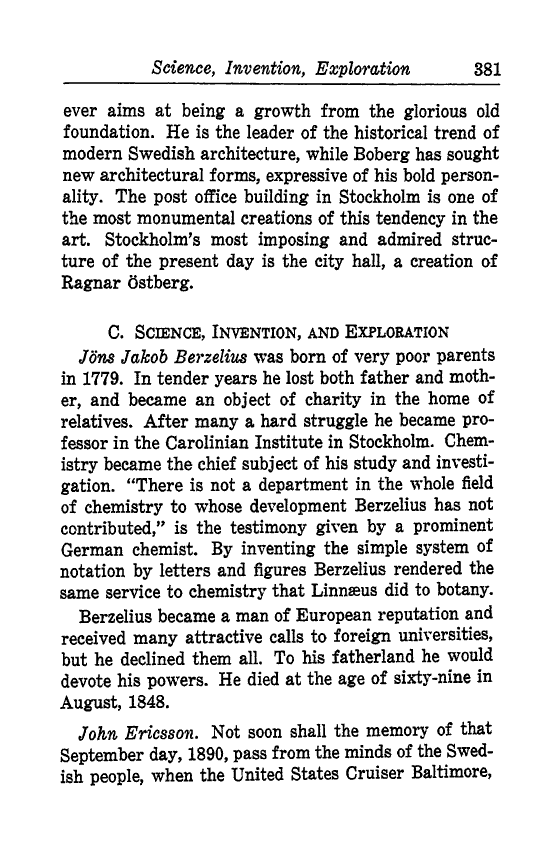
Full resolution (TIFF) - On this page / på denna sida - XXIV. Art and Science - B. Sculpture and Architecture - C. Science, Invention, and Discovery

<< prev. page << föreg. sida << >> nästa sida >> next page >>
Below is the raw OCR text
from the above scanned image.
Do you see an error? Proofread the page now!
Här nedan syns maskintolkade texten från faksimilbilden ovan.
Ser du något fel? Korrekturläs sidan nu!
This page has never been proofread. / Denna sida har aldrig korrekturlästs.
Science, Invention, Exploration 381
ever aims at being a growth from the glorious old
foundation. He is the leader of the historical trend of
modern Swedish architecture, while Boberg has sought
new architectural forms, expressive of his bold person-
ality. The post office building in Stockholm is one of
the most monumental creations of this tendency in the
art. Stockholm’s most imposing and admired struc-
ture of the present day is the city hall, a creation of
Ragnar ostberg.
C. SCIENCE, INVENTION, AND EXPLORATION
Jons Jakob Berzelius was born of very poor parents
in 1779. In tender years he lost both father and moth-
er, and became an object of charity in the home of
relatives. After many a hard struggle he became pro-
fessor in the Carolinian Institute in Stockholm. Chem-
istry became the chief subject of his study and investi-
gation. "There is not a department in the whole field
of chemistry to "whose development Berzelius has not
contributed," is the testimony given by a prominent
German chemist. By inventing the simple system of
notation by letters and figures Berzelius rendered the
same service to chemistry that Linnaeus did to botany.
Berzelius became a man of European reputation and
received many attractive calls to foreign universities,
but he declined them all. To his fatherland he would
devote his powers. He died at the age of sixty-nine in
August, 1848.
John Ericsson. Not soon shall the memory of that
September day, 1890, pass from the minds of the Swed-
ish people, when the United States Cruiser Baltimore,
<< prev. page << föreg. sida << >> nästa sida >> next page >>